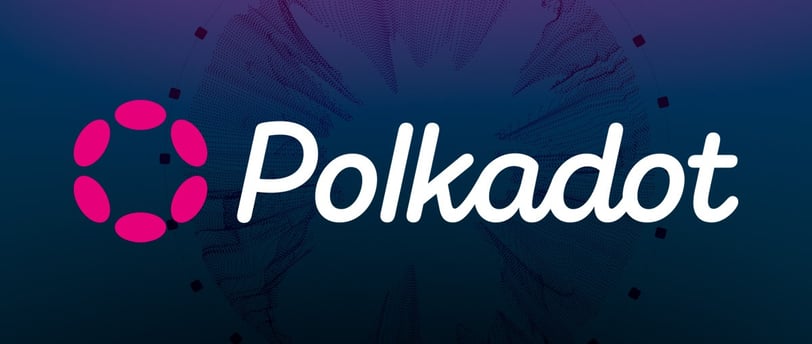Polkadot (DOT): The Revolution of Interoperability and Scalability in the Blockchain Universe
CRYPTO MARKET
2/16/20254 min read


Origins and Development
Polkadot was conceived by Gavin Wood, a prominent figure in the cryptocurrency world and co-founder of Ethereum. In 2016, Wood published the Polkadot whitepaper, outlining a vision for a platform that would enable communication between different blockchains. To support the development of this project, he co-founded the Web3 Foundation in 2017 along with Peter Czaban. The foundation, headquartered in Zug, Switzerland, raised approximately $145 million in an initial coin offering (ICO) in October 2017. Despite facing challenges, such as the loss of funds due to a vulnerability in Parity Technologies' multi-signature wallets, the team persevered, conducting subsequent private sales to fund the project.
Polkadot's Proposal
Polkadot was designed to solve two major challenges of traditional blockchains: scalability and interoperability. Its architecture allows multiple application-specific blockchains, called parachains, to operate in parallel, connecting to a main chain known as the Relay Chain. This facilitates communication and data transfer between different networks, promoting a more cohesive and efficient ecosystem. Additionally, Polkadot offers a decentralized governance structure, allowing DOT token holders to actively participate in network decisions.
Blockchain Architecture and Parachains
Polkadot’s architecture consists of several key components:
Relay Chain: The main chain that coordinates the network, responsible for shared security, consensus, and interoperability between parachains.
Parachains: Independent blockchains that connect to the Relay Chain, benefiting from the security and interoperability it provides. Each parachain can be optimized for specific use cases, allowing flexibility and specialization.
Parathreads: Similar to parachains but with a temporary connection to the Relay Chain, ideal for blockchains that do not require a continuous connection.
Bridges: Mechanisms that enable communication between Polkadot and other external blockchains, such as Ethereum and Bitcoin, facilitating asset and information transfers.
The interaction between these components is facilitated by the Cross-Consensus Message Format (XCM), a communication standard that enables data and asset transfers between different parachains and other networks.
Consensus Mechanism and Security
Polkadot utilizes a hybrid consensus mechanism combining BABE (Blind Assignment for Blockchain Extension) for block production and GRANDPA (GHOST-based Recursive ANcestor Deriving Prefix Agreement) for block finalization. This system ensures that transactions are processed efficiently and securely. Additionally, the network operates under a Nominated Proof of Stake (NPoS) model, where validators are selected based on the amount of DOT that token holders are willing to delegate, promoting decentralization and security.
Tokenomics: The DOT Token
DOT is Polkadot’s native token and serves several essential functions within the ecosystem:
Governance: DOT holders have the right to participate in network decisions, including proposals for updates and changes to protocol parameters.
Staking: DOT is used to reward validators who participate in the consensus process, ensuring the integrity and security of the network.
Bonding: DOT tokens are used to connect new parachains to the Relay Chain, encouraging the growth and expansion of the ecosystem.
Initially, the total supply of DOT was set at 10 million tokens. However, after a redenomination in August 2020, the supply was adjusted to 1 billion tokens, making calculations and adoption easier.
Ecosystem and Key Associated Tokens
Since its launch, Polkadot has attracted a variety of projects looking to leverage its interoperable and scalable architecture. Some of the main tokens and projects within the Polkadot ecosystem include:
Acala Network (ACA): A decentralized financial platform offering services such as liquid staking, lending, and a native stablecoin.
Moonbeam (GLMR): A parachain that brings full Ethereum compatibility, allowing developers to deploy smart contracts with ease.
Astar (ASTR): Focused on supporting multiple virtual machines and smart contracts, facilitating the creation of diverse dApps.
Parallel Finance (PARA): A decentralized finance protocol providing staking, lending, and derivatives services within the Polkadot ecosystem.
Phala Network (PHA): Offers confidential cloud computing, ensuring privacy for smart contracts and user data.
These projects exemplify the diversity of the Polkadot ecosystem, demonstrating its ability to support multiple use cases, from decentralized finance (DeFi) to privacy and interoperability solutions.
Future Projections for Polkadot
Polkadot continues to evolve rapidly, with constant updates and improvements to its infrastructure. Some of the key factors that may impact its future include:
Growth of Parachains
The parachain model allows new innovative projects to integrate into the Polkadot ecosystem. With ongoing parachain slot auctions, more specialized blockchains will enter the network, increasing Polkadot’s utility and adoption.
Expansion of Interoperability
With the development of the XCM (Cross-Consensus Message Format) protocol and the implementation of bridges to other blockchains, Polkadot could become one of the main interoperability hubs between different networks, facilitating communication between ecosystems such as Ethereum, Solana, and Binance Smart Chain.
Improvements in Scalability
The implementation of asynchronous support for sharding and optimizations in the consensus mechanism can further increase Polkadot’s processing capacity, making it more efficient and competitive.
Increasing Institutional Adoption
With the growing demand for enterprise and regulated blockchain solutions, Polkadot could position itself as a viable platform for businesses and governments interested in building decentralized and interoperable infrastructures.
Development of Web3 and DAOs
Polkadot aligns with the Web3 Foundation’s vision for a decentralized future. The growth of decentralized autonomous organizations (DAOs) and Web3 applications could further drive its adoption and relevance in the market.
Polkadot represents one of the most ambitious projects in the blockchain space, offering an innovative approach to scalability, security, and interoperability. Its parachain model, advanced consensus mechanism, and decentralized governance provide a solid foundation for its expansion and adoption.
However, like any emerging technology, Polkadot faces challenges, including competition from other networks and regulatory issues. Its success will depend on the ability of the team and community to continue innovating and fostering ecosystem growth.
Disclaimer: This article is purely informative and should not be interpreted as investment advice. Cryptocurrencies are highly volatile assets, and any investment decision should be made based on independent research and risk assessment.
